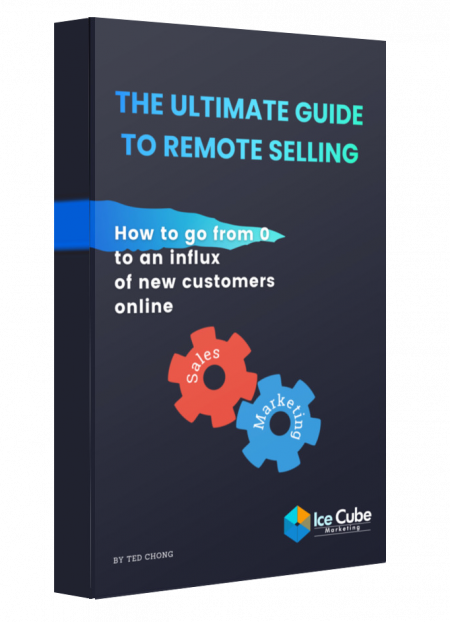As a Google Premier Partner, among the top 3% of agencies in Singapore, we spend over $5 million a year on advertising. Along the way, we’ve made our share of mistakes—and seen many businesses repeat them.
Here are the seven most common mistakes Singapore businesses make in digital marketing—and how you can avoid them to save both time and money.
1. Focusing Too Much on “Digital” and Not Enough on “Marketing”
Digital marketing has two parts: digital and marketing. Yet most businesses get caught up in the technical side—targeting options, campaign structure, bidding, and so on.
These optimizations bring only incremental improvements, not exponential results. True breakthroughs come from marketing strategy, not tactics.
Instead of asking, “What targeting should we use?” ask:
- “What should our positioning be?”
- “What is our unique selling proposition (USP)?”
For example, one of our clients—a hair salon catering exclusively to Muslim women who wear hijabs—found success because the campaign focused on providing a safe, private environment. The message aligned perfectly with what the audience truly needed.
Remember the 80/20 rule: focus on the 20% of factors that drive 80% of results.

2. Targeting the Wrong Audience
Many businesses waste ad spend trying to convince people who can’t be convinced.
Take Feng Shui ads, for instance. Some try to persuade non-believers to buy Feng Shui products. That’s the wrong approach. You’re running a business, not a religion—so target people who already believe in Feng Shui.
The same goes for charities. One organization we audited tried to reach people who had never donated before. Instead, they should have targeted those who already have a habit of donating.
In marketing, persuasion is costly—relevance is powerful.

3. Preaching on Social Media
No one likes being preached at. Yet many brands make this mistake.
A dentist might lecture about flossing “for your own good.” A vegan brand might nag people to eat vegetables to “save the planet.” These messages don’t work because people go to social media for entertainment, not for moral lessons.
The key is simple: Give people what they want now, and tell them what they need later.
- If you’re a travel company, sell the vacation experience—the beach, the margarita, the adventure. Don’t talk about the long flights or airport queues.
- If you run a gym, show the before-and-after results, not the grind of diet and workouts.
Hook them first with what they want. Once they’re your customers, then you can teach them what they need.
4. Making Too Many Assumptions
Never assume you know what your audience wants—let the market tell you.
One client selling eco-friendly furniture believed their customers cared about sustainability. But when we ran ads focused on “eco-friendliness,” sales were terrible. When we pivoted to highlight design and functionality, sales soared.
Another example: a preschool wanted to attract parents by promoting its academic head start. The campaign underperformed. But when we changed the message to emphasize fun learning and life skills, the response improved dramatically.
The lesson: no matter how experienced you are, you can’t predict what works. Test your assumptions. The market always has the final say.
5. Trying Too Many Things at Once
Some businesses want to do it all—Google, Facebook, TikTok, Xiaohongshu, SEO, influencer marketing, email marketing—everything, everywhere, all at once.
That’s chaos. If you’re just building a presence, fine. But if you want real results, go all-in on one platform first.
Test multiple ad messages and audiences within that platform. Once something works, double down on it before jumping to the next strategy.
Spreading too thin means you’ll never go deep enough to see meaningful results.

6. Treating Digital Marketing as Separate from Business
Some businesses treat digital marketing as if it’s an isolated function. But as marketing legend Dan Kennedy said, “The business that can spend the most to acquire a customer wins.”
Take Starbucks as an example. A cup of coffee might cost $6–$7, but the lifetime value of a Starbucks customer is over $14,000. With this data, Starbucks can easily outspend competitors to acquire new customers.
The takeaway?
Successful digital marketing depends on having a strong business foundation—good products, solid processes, and repeat customers. Those businesses can afford to invest more in acquiring customers and still stay profitable.
7. Blindly Following “Best Practices” from Facebook and Google
Facebook and Google often promote their “best practices,” but following them blindly can burn your budget.
For example:
- Facebook sets auto placements by default, showing ads across multiple networks.
- Google encourages broad match targeting, giving the algorithm full control.
While these may work for the platforms (since it increases ad spend), it doesn’t always serve advertisers’ interests.
So take these “recommendations” with caution. Best practices aren’t always best for your business.
Final Thoughts
To recap, here are the seven mistakes most Singapore businesses make in digital marketing:
- Focusing too much on digital, not marketing.
- Targeting the wrong audience.
- Preaching instead of engaging.
- Making assumptions without testing.
- Trying too many things at once.
- Treating digital marketing as separate from business.
- Blindly following platform “best practices.”
It took us years—and millions in ad spend—to learn these lessons. Avoid these pitfalls, and you’ll be well on your way to building a stronger, more profitable digital marketing strategy.










